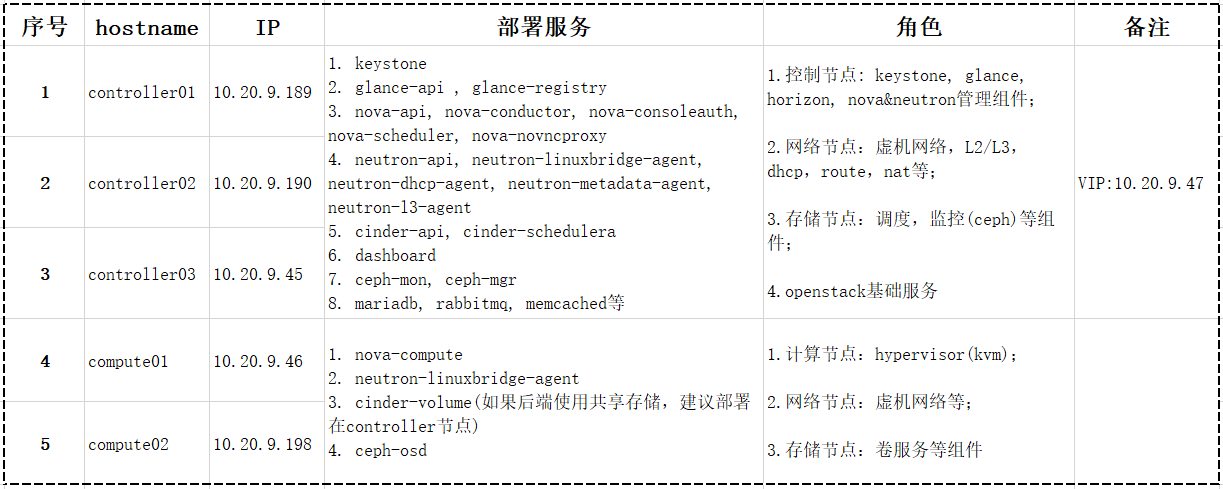文章目录
- 1.链表的概念以及结构
- 2.链表的分类
- 2.1 单向或者双向
- 2.2 带头或者不带头
- 2.3 循环或者不循环
- 2.4 无头单向非循环链表和带头双向循环链表
- 3.单链表的实现
- 3.1 准备工作
- 3.2 节点的创建
- 3.3 单链表的释放
- 3.4 打印链表
- 3.5 单链表的尾插
- 3.6 单链表的尾删
- 3.7 单链表头删
- 3.8 单链表的头插
- 3.9 单链表的查找
- 3.10 在pos位置后插入
- 3.11 删除pos位置后的数据
- 4.代码整合
- 5.顺序表与链表的区别
1.链表的概念以及结构
概念:链表是一种物理储存结构上的非连续、非顺序的储存结构,数据元素的逻辑顺序是通过链表中的指针链接次序实现的。

- 链式结构在逻辑上是连续的,但是在物理上不一定连续
- 现实中的节点一般都是从堆上申请出来的
- 从堆上申请的空间,是按照一定的策略来分配的,两次申请的空间可能连续,也可能不连续
2.链表的分类
实际中链表的结构非常多样,以下情况组合起来就有8种链表。
2.1 单向或者双向

2.2 带头或者不带头

2.3 循环或者不循环

2.4 无头单向非循环链表和带头双向循环链表
虽然有这么多的链表结构,但是我们实际中最常用的还是两种结构。
无头单向非循环链表

带头双向循环链表

- 无头单向非循环链表:结构简单,一般不会单独用来存储数据,实际中更多的是作为其他数据结构的子结构,如哈希桶、图的邻接表等等。另外在笔试中出现较多
- 带头双向循环链表:结构最复杂,一般用来单独存储数据。实际中使用的链表结构都是带头双向循环链表。另外这个结构虽然复杂,但是使用代码实现时反而简单。
3.单链表的实现
3.1 准备工作
定义结构体.
链表的节点只要两个值需要存储,一个是数据内容,一个是下一个节点的地址。
注意:为了更多的使用场景,我们可以定义一个宏去去替换数据类型。为了方便我就直接写int的。
typedef struct SListNode
{int data;struct SListNode* next;
}SL;
3.2 节点的创建
正常利用malloc创建就好,注意要检查内存是否开辟失败。
//动态申请一个节点
SL* BuySListNode(int x)
{SL* tmp = (SL*)malloc(sizeof(SL));if (tmp == NULL){perror("malloc");exit(-1);}tmp->data = x;tmp->next = NULL;return tmp;
}
3.3 单链表的释放
注意使用二级指针,因为我们传递的是一级指针的地址
SL* head = NULL;
DestoryList(&head);
释放时,为了释放当前节点,我们要在cur指向下一个节点时先保存一下该节点的地址。
//释放
void DestoryList(SL** head)
{SL* cur = (*head);while (cur){SL* prev = cur;cur = cur->next;free(prev);prev = NULL;}
}
3.4 打印链表
遍历打印就可以了,assert的目的是为了防止有人把空指针传进来。
//打印链表
void PrintList(SL** head)
{assert(head);//assert(*head);SL* cur = *head;while (cur){printf("%d ", cur->data);cur = cur->next;}printf("\n");
}3.5 单链表的尾插
尾插有两种情况:
1.*head为空
直接让*head指向一个新的节点
2.*head不为空
找到当前链表的最后一个节点,然后将新创建的节点连接到后面
//单链表尾插
void PushBackList(SL** head,int x)
{assert(head);//防止有人把空指针传进来。if (*head == NULL){*head = BuySListNode(x);return;}SL* cur = *head;SL* tmp = BuySListNode(x);while (cur->next){cur = cur->next;}cur->next = tmp;
}
3.6 单链表的尾删
删除存在三种情况:
1.只有一个节点了
直接free释放,*head要置为NULL
2.不止一个节点
先找到第二个节点,然后释放第一个节点,将*head指向新的第一个节点。
3.没有节点
直接报错
//单链表尾删
void PopbackList(SL** head)
{assert(head);//防止有人把空指针传进来。assert(*head);SL* cur = *head;if (cur->next == NULL)//当剩下1个元素时,直接释放{free(cur);*head = NULL;return;}SL* prev = cur;while (cur->next){prev = cur;cur = cur->next;}free(cur);cur = NULL;prev->next = NULL;
}
3.7 单链表头删
删除存在三种情况:
1.只有一个节点了
直接free释放,*head要置为NULL
2.不止一个节点
找到最后一个节点和其前一个节点,找倒数第二个节点的目的是为了将next置为NULL
3.没有节点
直接报错
//单链表头删
void PopFrontList(SL** head)
{assert(head);//防止有人把空指针传进来。assert(*head);SL* cur = *head;if (cur->next == NULL)//当剩下1个元素时,直接释放{free(cur);*head = NULL;return;}SL* next = cur->next;free(cur);cur = NULL;*head = next;
}
3.8 单链表的头插
头插有两种情况:
1.*head为空
直接让*head指向一个新的节点
2.*head不为空
创建一个新的节点,找到当前链表的第一个节点,然后将新创建的节点的next指针指向第一个节点。然后让*head指向新的节点
//单链表头插
void PushFrontList(SL** head, int x)
{assert(head);if (*head == NULL){*head = BuySListNode(x);return;}SL* newnode = BuySListNode(x);newnode->next = *head;*head = newnode;
}
3.9 单链表的查找
找到返回节点,找不到返回NULL
//单链表的查找
SL* FindSlistNode(SL** head, int x)
{assert(head);assert(*head);SL* cur = *head;while (cur){if (cur->data == x){return cur;}cur = cur->next;}return NULL;
}
3.10 在pos位置后插入
既然要在pos节点后插入数据,那就要保证链表不为NULL,pos不为NULL
插入的逻辑就是尾插的逻辑,但是这里我们不在需要找节点位置了,已经给出pos节点了。
//在pos位置后插入
void InsertList(SL** head, SL* pos, int x)
{assert(head);assert(*head);assert(pos);SL* newnode = BuySListNode(x);newnode->next = pos->next;pos->next = newnode;
}
3.11 删除pos位置后的数据
注意两种情况就行了。
//删除pos位置后的节点
void EraseList(SL** head, SL* pos)
{assert(pos);assert(head);assert(*head);if (pos->next == NULL)return;else{SL* next = pos->next->next;SL* tmp = pos->next;pos->next = next;free(tmp);tmp = NULL;}
}
4.代码整合
//list.h
#include <stdio.h>
#include <time.h>
#include <stdlib.h>
#include <assert.h>typedef struct SListNode
{int data;struct SListNode* next;
}SL;//动态申请一个节点
SL* BuySListNode(int x);//销毁链表
void DestoryList(SL** head);//打印链表
void PrintList(SL** head);//单链表尾插
void PushBackList(SL** head, int x);//单链表尾删
void PopbackList(SL** head);//单链表头删
void PopFrontList(SL** head);//单链表头插
void PushFrontList(SL** head, int x);//单链表的查找
SL* FindSlistNode(SL** head, int x);//在pos位置后插入
void InsertList(SL** head, SL* pos, int x);//删除pos位置后的节点
void EraseList(SL** head, SL* pos);//list.c
#include "list.h"SL* BuySListNode(int x)
{SL* tmp = (SL*)malloc(sizeof(SL));if (tmp == NULL){perror("malloc");exit(-1);}tmp->data = x;tmp->next = NULL;return tmp;
}void DestoryList(SL** head)
{SL* cur = (*head);while (cur){SL* prev = cur;cur = cur->next;free(prev);}}//打印链表
void PrintList(SL** head)
{//assert(*head);SL* cur = *head;while (cur){printf("%d ", cur->data);cur = cur->next;}printf("\n");
}//单链表尾插
void PushBackList(SL** head,int x)
{if (*head == NULL){*head = BuySListNode(x);return;}SL* cur = *head;SL* tmp = BuySListNode(x);while (cur->next){cur = cur->next;}cur->next = tmp;
}//单链表尾删
void PopbackList(SL** head)
{assert(*head);SL* cur = *head;if (cur->next == NULL)//当剩下1个元素时,直接释放{free(cur);cur = NULL;*head = NULL;return;}SL* prev = cur;while (cur->next){prev = cur;cur = cur->next;}free(cur);cur = NULL;prev->next = NULL;
}//单链表头删
void PopFrontList(SL** head)
{assert(head);//防止有人把空指针传进来。assert(*head);SL* cur = *head;if (cur->next == NULL)//当剩下1个元素时,直接释放{free(cur);cur = NULL;*head = NULL;return;}SL* next = cur->next;free(cur);cur = NULL;*head = next;
}//单链表头插
void PushFrontList(SL** head, int x)
{assert(head);if (*head == NULL){*head = BuySListNode(x);return;}SL* newnode = BuySListNode(x);newnode->next = *head;*head = newnode;
}//单链表的查找
SL* FindSlistNode(SL** head, int x)
{assert(*head);SL* cur = *head;while (cur){if (cur->data == x){return cur;}cur = cur->next;}return NULL;
}//在pos位置后插入
void InsertList(SL** head, SL* pos, int x)
{assert(pos);SL* newnode = BuySListNode(x);newnode->next = pos->next;pos->next = newnode;
}//删除pos位置后的节点
void EraseList(SL** head, SL* pos)
{assert(pos);assert(head);assert(*head);if (pos->next == NULL)return;else{SL* next = pos->next->next;SL* tmp = pos->next;pos->next = next;free(tmp);tmp = NULL;}
}//test.c
#include "list.h"//void test1()
//{
// SL* head = BuySListNode(1);
// PushBackList(&head, 2);
// PushBackList(&head, 3);
// PushBackList(&head, 4);
// PopFrontList(&head);
// PrintList(&head);
// PopFrontList(&head);
// PrintList(&head);
// PopFrontList(&head);
// PrintList(&head);
// PopFrontList(&head);
// PrintList(&head);
// DestoryList(&head);
//}
//
//void test2()
//{
// SL* head = BuySListNode(1);
// PushFrontList(&head, 4);
// PushFrontList(&head, 2);
//
// SL* tmp = FindSlistNode(&head, 1);
// printf("tmp:%d\n", tmp->data);
//
// tmp = FindSlistNode(&head, 100);
// if(tmp!=NULL)
// printf("tmp:%d\n", tmp->data);
// DestoryList(&head);
//
//}
//
//void test3()
//{
// SL* head = NULL;
// PushFrontList(&head, 4);
// PushFrontList(&head, 2);
// PushBackList(&head, 1);
// PushBackList(&head, 1);
// PushBackList(&head, 1);
// SL* tmp = FindSlistNode(&head, 2);
// InsertList(&head, tmp, 100);
// EraseList(&head, tmp);
// PrintList(&head);
// DestoryList(&head);
//
//}int main()
{test3();return 0;
}
5.顺序表与链表的区别
| 不同点 | 顺序表 | 链表 |
|---|---|---|
| 存储空间上 | 物理上一定连续 | 逻辑上连续,但物理上不一定 连续 |
| 随机访问 | 支持O(1) | 不支持:O(N) |
| 任意位置插入或者删除 元素 | 可能需要搬移元素,效率低 O(N) | 只需修改指针指向 |
| 插入 | 动态顺序表,空间不够时需要 扩容 | 没有容量的概念 |
| 应用场景 | 元素高效存储+频繁访问 | 任意位置插入和删除频繁 |
| 缓存利用率 | 高 | 低 |










![[Git][分支管理][上]详细讲解](https://i-blog.csdnimg.cn/direct/9e0a1a62bd6d4e4eaa9beff6956ec027.png)







![[WUSTCTF2020]朴实无华1](https://i-blog.csdnimg.cn/direct/c810468159d647ed8d6cf9dfffd8f523.png)